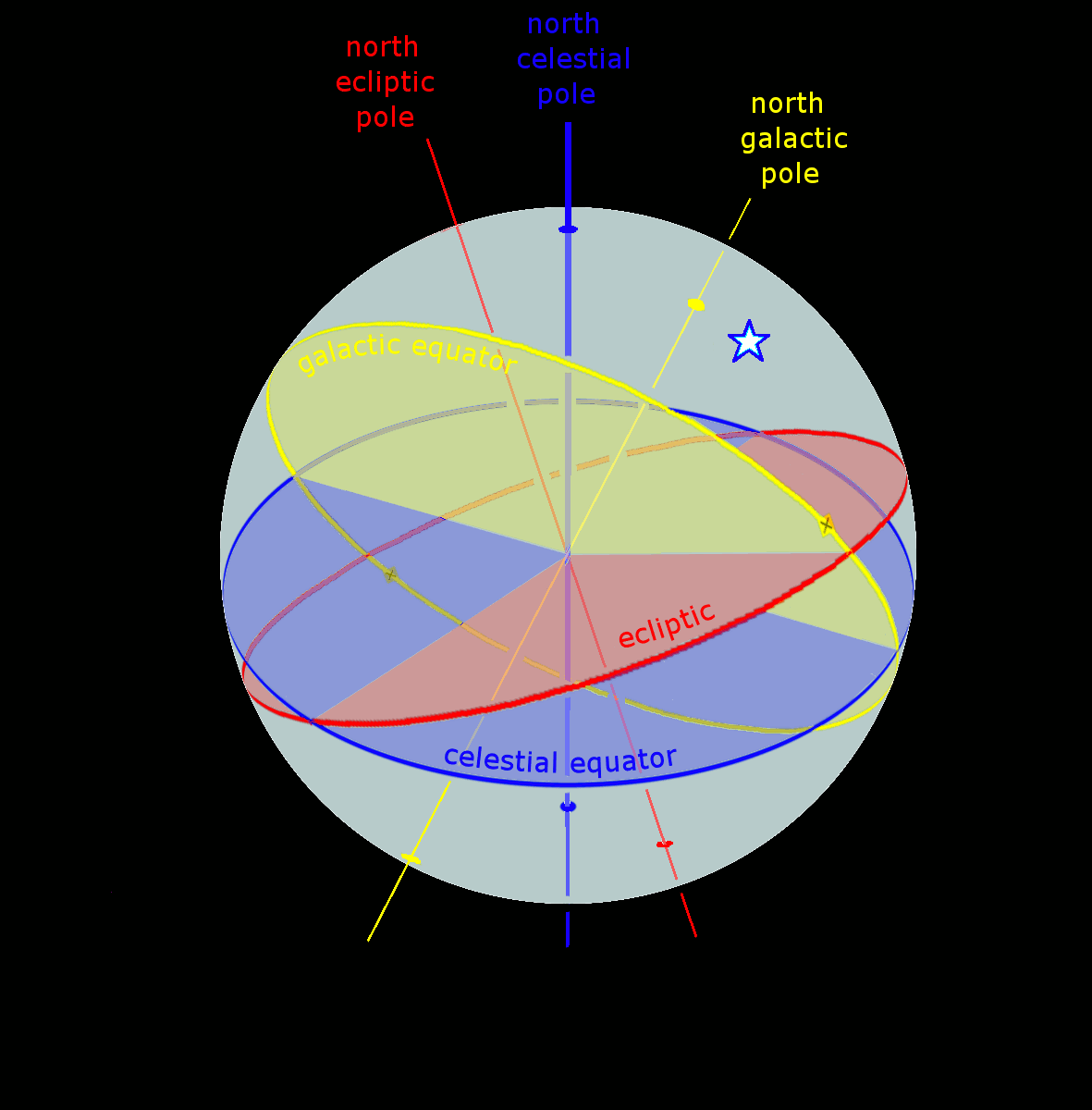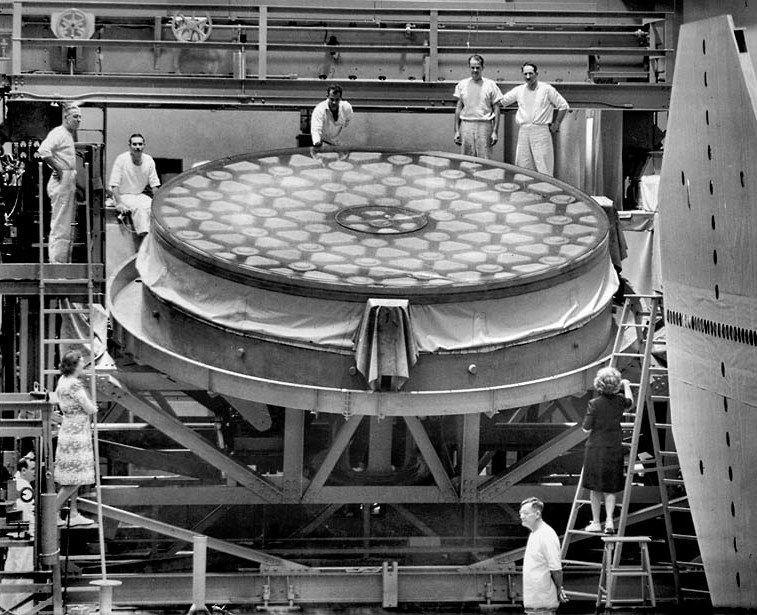|
Equatorial Mount
An equatorial mount is a mount for instruments that compensates for Earth's rotation by having one rotational axis, called ''polar axis'', parallel to the Earth's axis of rotation. This type of mount is used for astronomical telescope mount, telescopes and cameras. The advantage of an equatorial mount lies in its ability to allow the instrument attached to it to stay fixed on any celestial object with diurnal motion by driving one axis at a constant speed. Such an arrangement is called a ''sidereal drive'' or ''clock drive''. Equatorial mounts achieve this by aligning their rotational axis with the Earth, a process known as ''polar alignment''. Astronomical telescope mounts In astronomical telescope mounts, the equatorial axis (the ''right ascension'') is paired with a second perpendicular coordinate axis, axis of motion (known as the ''declination''). The equatorial axis of the mount is often equipped with a motorized "''clock drive''", that rotates that axis one revolution e ... [...More Info...] [...Related Items...] OR: [Wikipedia] [Google] [Baidu] |
Celestial Coordinates
In astronomy, coordinate systems are used for specifying positions of celestial objects (satellites, planets, stars, galaxies, etc.) relative to a given reference frame, based on physical reference points available to a situated observer (e.g. the true horizon and north to an observer on Earth's surface). Coordinate systems in astronomy can specify an object's relative position in three-dimensional space or plot merely by its direction on a celestial sphere, if the object's distance is unknown or trivial. Spherical coordinates, projected on the celestial sphere, are analogous to the geographic coordinate system used on the surface of Earth. These differ in their choice of fundamental plane, which divides the celestial sphere into two equal hemispheres along a great circle. Rectangular coordinates, in appropriate units, have the same fundamental () plane and primary (-axis) direction, such as an axis of rotation. Each coordinate system is named after its choice of funda ... [...More Info...] [...Related Items...] OR: [Wikipedia] [Google] [Baidu] |
Hale Telescope
The Hale Telescope is a , 3.3 reflecting telescope at the Palomar Observatory in San Diego County, California, US, named after astronomer George Ellery Hale. With funding from the Rockefeller Foundation in 1928, he orchestrated the planning, design, and construction of the observatory, but with the project ending up taking 20 years he did not live to see its commissioning. The Hale was groundbreaking for its time, with double the diameter of the second-largest telescope, and pioneered many new technologies in telescope mount design and in the design and fabrication of its large aluminum coated "honeycomb" low thermal expansion Pyrex mirror. It was completed in 1949 and is still in active use. The Hale Telescope represented the technological limit in building large optical telescopes for over 30 years. It was the largest telescope in the world from its construction in 1949 until the Soviet BTA-6 was built in 1976, and the second largest until the construction of the Keck Ob ... [...More Info...] [...Related Items...] OR: [Wikipedia] [Google] [Baidu] |
Palomar Arp 600pix
Palomar may refer to: Places * Any of several locations in San Diego County, California: ** Palomar Mountain *** Palomar Mountain, California, an unincorporated community ** Palomar College in San Marcos, California *** Palomar College Transit Center ** Palomar Health, a healthcare district covering a portion of the county *** Palomar Medical Center Escondido in Escondido, California *** Palomar Medical Center Poway in Poway, Califonira ** McClellan–Palomar Airport, informally referred to as just Palomar Airport, in Carlsbad, California ** Palomar Street Transit Center in Chula Vista, California * Palomar Ballroom, in Los Angeles, California * Palomar (bar), in Portland, Oregon * Palomar Hills, Lexington, a neighborhood in Lexington, Kentucky * Hotel Palomar (Washington, D.C.) * El Palomar, Buenos Aires, a city in Argentina ** El Palomar (airbase), Argentina * El Palomar, Valencia, a municipality in Spain * Palomar de Arroyos, a town in Aragón, Spain Music * Paloma ... [...More Info...] [...Related Items...] OR: [Wikipedia] [Google] [Baidu] |
Mount Wilson Observatory
The Mount Wilson Observatory (MWO) is an Observatory#Astronomical observatories, astronomical observatory in Los Angeles County, California, United States. The MWO is located on Mount Wilson (California), Mount Wilson, a peak in the San Gabriel Mountains near Pasadena, California, Pasadena, northeast of Los Angeles. The observatory contains two historically important telescopes: the #100-inch Hooker telescope, Hooker telescope, which was the largest aperture telescope in the world from its completion in 1917 to 1949, and the #60-inch telescope, 60-inch telescope which was the largest operational telescope in the world when it was completed in 1908. It also contains the Snow solar telescope completed in 1905, the solar tower completed in 1908, the solar tower completed in 1912, and the CHARA array, built by Georgia State University, which became fully operational in 2004 and was the largest optical interferometer in the world at its completion. Due to the inversion (meteorol ... [...More Info...] [...Related Items...] OR: [Wikipedia] [Google] [Baidu] |
100inchHooker
1 (one, unit, unity) is a number, numeral, and glyph. It is the first and smallest positive integer of the infinite sequence of natural numbers. This fundamental property has led to its unique uses in other fields, ranging from science to sports, where it commonly denotes the first, leading, or top thing in a group. 1 is the unit of counting or measurement, a determiner for singular nouns, and a gender-neutral pronoun. Historically, the representation of 1 evolved from ancient Sumerian and Babylonian symbols to the modern Arabic numeral. In mathematics, 1 is the multiplicative identity, meaning that any number multiplied by 1 equals the same number. 1 is by convention not considered a prime number. In digital technology, 1 represents the "on" state in binary code, the foundation of computing. Philosophically, 1 symbolizes the ultimate reality or source of existence in various traditions. In mathematics The number 1 is the first natural number after 0. Each natural numbe ... [...More Info...] [...Related Items...] OR: [Wikipedia] [Google] [Baidu] |
Universe Today
Universe Today (U.T.) is a North American-based non-commercial space and astronomy news website founded by Fraser Cain. The domain was registered on December 30, 1998, and the website went live in March 1999. ''Universe Today'' assumed its current form on July 24, 2003, featuring astronomy news and other space-related content. In early September 2005, the website’s forum section merged with '' Bad Astronomy'' to create a combined site with the BAUT forum. During April 2011, the Association of British Science Writers noted that ''Universe Today'' decided not to make preparations for reporting on embargoed stories until they are public knowledge. Emily Lakdawalla said that she relies on ''Universe Today'' and '' Bad Astronomy'' to "give ... an independent look at big news stories". Publications ''Universe Today'' has published two books, which are available both as e-books and on physical media: * * See also * '' Astronomy Cast'' * ''Space.com Space.com is an on ... [...More Info...] [...Related Items...] OR: [Wikipedia] [Google] [Baidu] |
Altazimuth Mount
An altazimuth mount or alt-azimuth mount is a simple two- axis mount for supporting and rotating an instrument about two perpendicular axes – one vertical and the other horizontal. Rotation about the vertical axis varies the azimuth (compass bearing) of the pointing direction of the instrument. Rotation about the horizontal axis varies the altitude angle (angle of elevation) of the pointing direction. These mounts are used, for example, with telescopes, cameras, radio antennas, heliostat mirrors, solar panels, and guns and similar weapons. Several names are given to this kind of mount, including altitude-azimuth, azimuth-elevation and various abbreviations thereof. A gun turret is essentially an alt-azimuth mount for a gun, and a standard camera tripod is an alt-azimuth mount as well. Astronomical telescope altazimuth mounts When used as an astronomical telescope mount, the biggest advantage of an alt-azimuth mount is the simplicity of its mechanical design. The primar ... [...More Info...] [...Related Items...] OR: [Wikipedia] [Google] [Baidu] |
Catadioptric
A catadioptric optical system is one where refraction and reflection are combined in an optical system, usually via lenses ( dioptrics) and curved mirrors ( catoptrics). Catadioptric combinations are used in focusing systems such as searchlights, headlamps, early lighthouse focusing systems, optical telescopes, microscopes, and telephoto lenses. Other optical systems that use lenses and mirrors are also referred to as "catadioptric", such as surveillance catadioptric sensors. Early catadioptric systems Catadioptric combinations have been used for many early optical systems. In the 1820s, Augustin-Jean Fresnel developed several catadioptric lighthouse reflector versions of his Fresnel lens. Léon Foucault developed a catadioptric microscope in 1859 to counteract aberrations of using a lens to image objects at high power. In 1876 a French engineer, A. Mangin, invented what has come to be called the Mangin mirror, a concave glass reflector with the silver surface on th ... [...More Info...] [...Related Items...] OR: [Wikipedia] [Google] [Baidu] |
Maksutov-Cassegrain Intes M703 Mounted
250px, A 150mm aperture Maksutov–Cassegrain telescope The Maksutov (also called a "Mak") is a catadioptric telescope design that combines a spherical mirror with a weakly negative meniscus lens in a design that takes advantage of all the surfaces being nearly "spherically symmetrical". The negative lens is usually full diameter and placed at the entrance pupil of the telescope (commonly called a "corrector plate" or "meniscus corrector shell"). The design corrects the problems of off-axis aberrations such as coma found in reflecting telescopes while also correcting chromatic aberration. It was patented in 1941 by Soviet optician Dmitri Dmitrievich Maksutov. Maksutov based his design on the idea behind the Schmidt camera of using the spherical errors of a negative lens to correct the opposite errors in a spherical primary mirror. The design is most commonly seen in a Cassegrain variation, with an integrated secondary, that can use all-spherical elements, thereby simplifying ... [...More Info...] [...Related Items...] OR: [Wikipedia] [Google] [Baidu] |
German Equatorial Mount
An equatorial mount is a mount for instruments that compensates for Earth's rotation by having one rotational axis, called ''polar axis'', parallel to the Earth's axis of rotation. This type of mount is used for astronomical telescopes and cameras. The advantage of an equatorial mount lies in its ability to allow the instrument attached to it to stay fixed on any celestial object with diurnal motion by driving one axis at a constant speed. Such an arrangement is called a ''sidereal drive'' or '' clock drive''. Equatorial mounts achieve this by aligning their rotational axis with the Earth, a process known as ''polar alignment''. Astronomical telescope mounts In astronomical telescope mounts, the equatorial axis (the ''right ascension'') is paired with a second perpendicular axis of motion (known as the ''declination''). The equatorial axis of the mount is often equipped with a motorized "'' clock drive''", that rotates that axis one revolution every 23 hours and 56 minutes ... [...More Info...] [...Related Items...] OR: [Wikipedia] [Google] [Baidu] |





